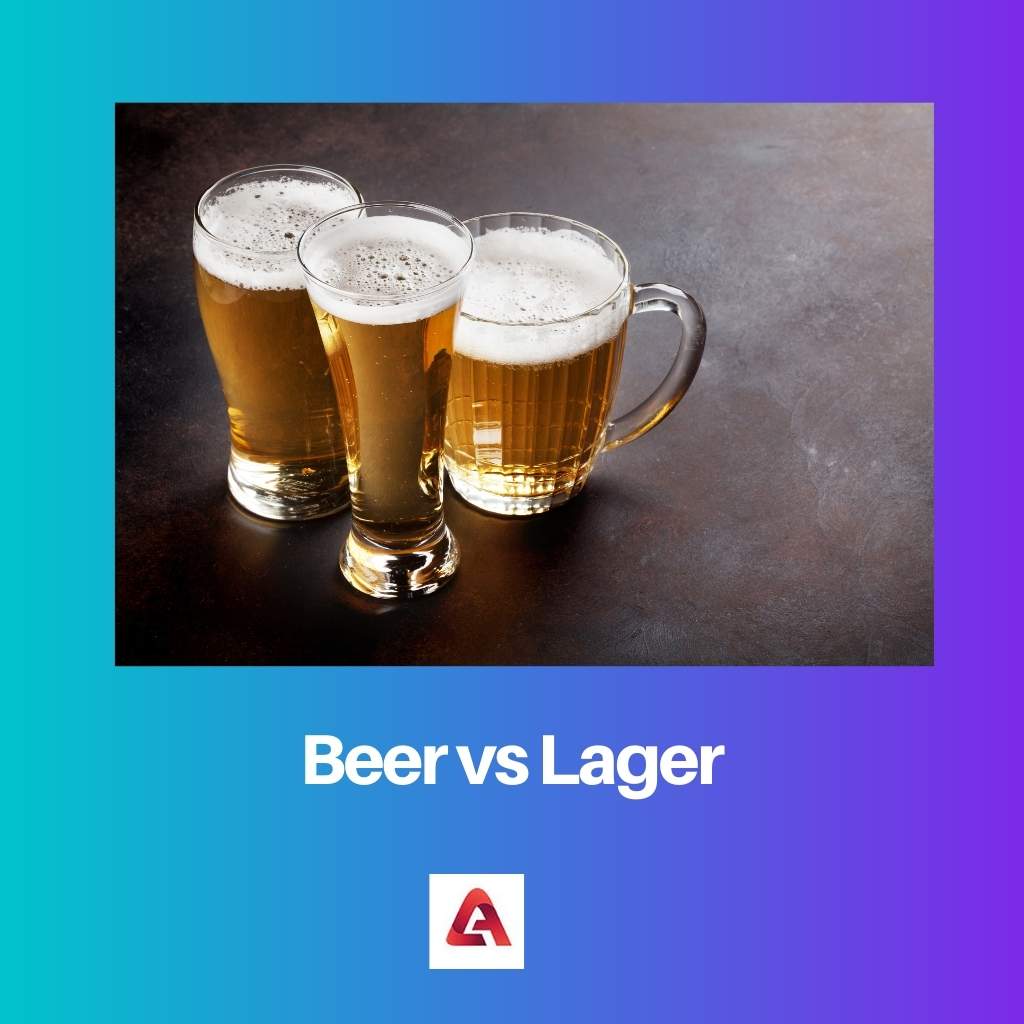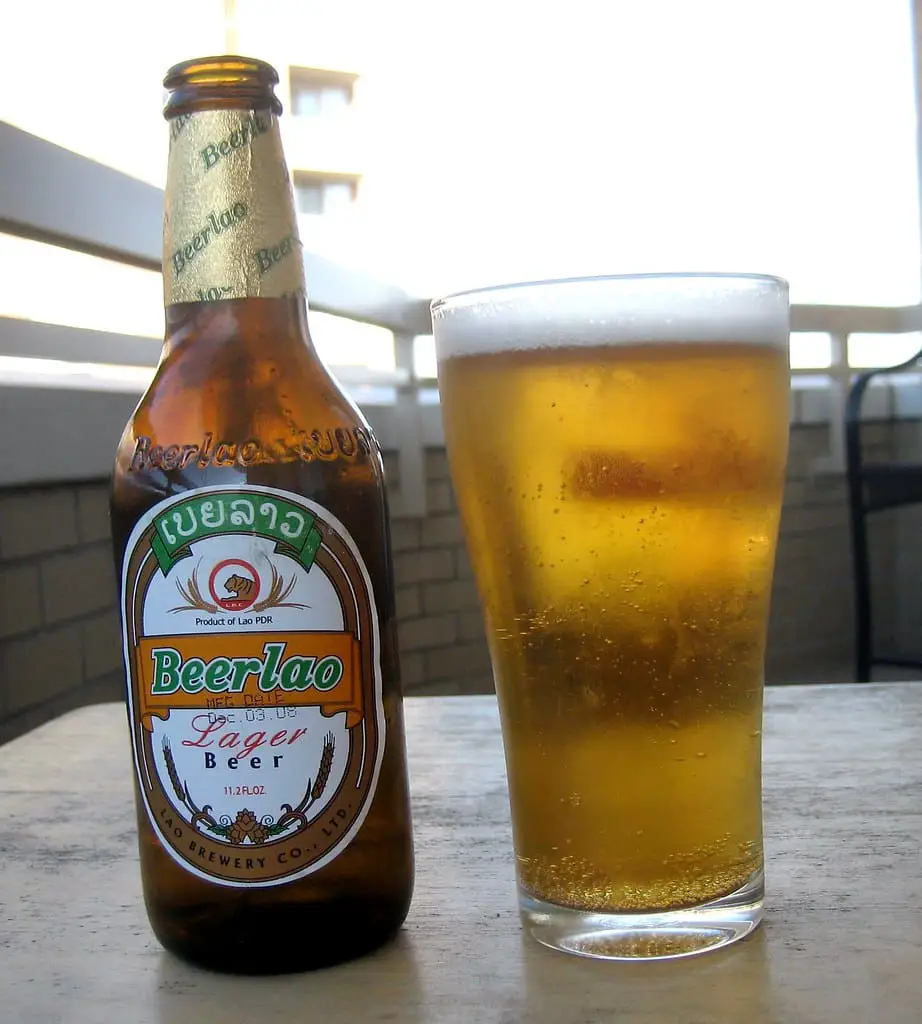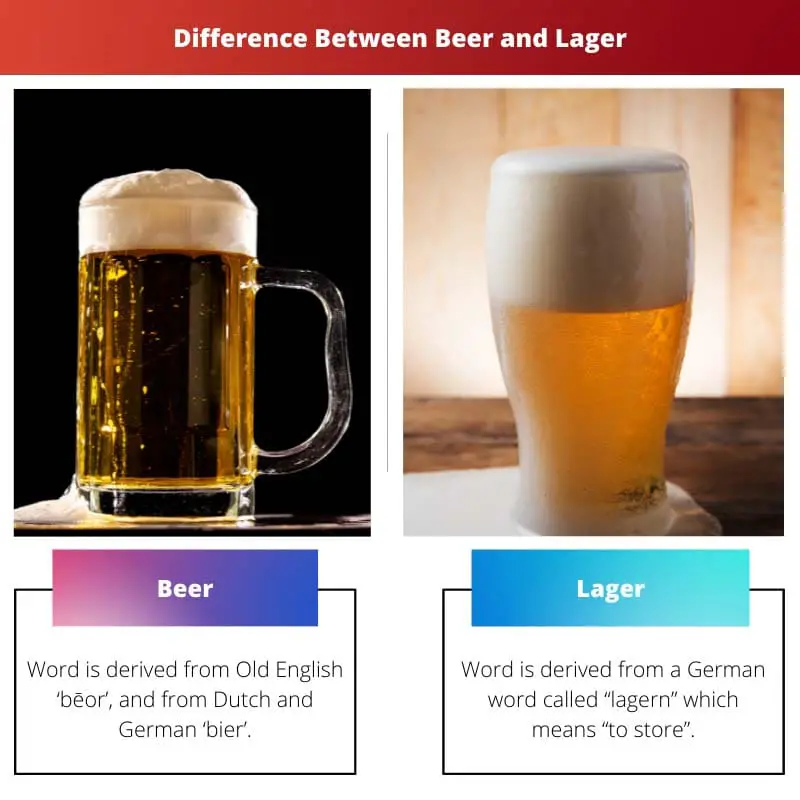The two most common types of alcoholic drinks are beer and lager. Though both have a similar origin and are of the same type, there are distinct differences between beer and lager.
Key Takeaways
- Lager is a specific type of beer characterized by its bottom-fermenting yeast and cold fermentation process.
- Ales are another beer category, utilizing top-fermenting yeast and warmer fermentation temperatures, differentiating them from lagers.
- Lagers have a cleaner, crisper taste than ales, which exhibit more robust and complex flavors.
Beer vs Lager
Beer is a type of fermented alcoholic drink made from malted barley, hops, water, and yeast. It is brewed by fermenting the malted barley with yeast at higher temperatures. Lager is a type of beer that is brewed at lower temperatures and fermented with a different type of yeast.

The main step in the manufacturing process is the presence of yeast. The yeast used in the beer processing is Saccharomyces cerevisiae.
Lager was initially derived from the idea that the brewers of Bavaria kept beer in cold areas and caves to make it refreshing during the hotter months.
Comparison Table
| Parameters of Comparison | Beer | Lager |
|---|---|---|
| Word derivation | Word is derived from Old English ‘bēor’, and from Dutch and German ‘bier’ | Word is derived from a German word called “lagern” which means “to store” |
| Yeast used | Saccharomyces cerevisiae | Saccharomyces pastorianus |
| Characteristics | Beer can have a specific aroma, appearance, mouthfeel, flavor, bitterness, alcohol content, and color | Crisp, light and refreshing |
| Types | Ale, Porter, Stout, Lager, Brown Ales and Blonde Ale | Helles, pilsner, märzen, bock, viennna lager, dunkel, schwarzbier, doppelbock |
| Period of production | Shorter | Longer |
What is Beer?
Beer is an alcoholic drink that is made by the process of brewing and fermentation of starches. The starches are mainly of cereal grains like malted barley, rice, wheat, oats, maize, and other common cereals.
Flavours of herbs, gruit, and fruits are also added and loved by consumers. Saccharomyces cerevisiae, a type of yeast, is used in the industrial fermentation of beer.
In large commercial production, there are forced carbonation procedures to make the processing faster. The best beer types in local style have been together written in a book called ‘The World Guide To Beer’ by Michael Jackson.
The freezing temperature of the beer is 27 °F. Beer even has a cultural association and is used in various festivals like beer festivals, pub games, pub quizzes, crawling, etc.

What is Lager?
Lager is a type of beer. It is a cool fermented version of the beer. Lager is derived from a German word called “lager”, which means “to store”.
It is also called the lagering phase. Esters are produced, which caters to a clean and crisp taste of the beer.
The pale lager is the most common and widely preferred type among lagers. Lagers are lighter and crisper than beer and are refreshing in taste.
Common types of lager are helles, pilsner, märzen, bock, viennna lager, dunkel, schwarzbier, doppelbock and various other types.

Main Differences Between Beer and Lager
- Beers are not necessarily served cold, but lager is always served cold.
- The brewing process of beer is shorter, while the brewing process of lager is longer.


Beer in festivals is part of a culture.
Beer and lager have quite different brewing processes.
I read ‘The World Guide to Beer’ and it is very well detailed about the best beer types.
I agree, ‘The World Guide to Beer’ is a great book.
Saccharomyces cerevisiae is used in the industrial fermentation of beer.
The most refreshing type of lager is the pale lager.
The manufacturing process of beer acknowledges the specific aroma, appearance, mouthfeel, flavor, bitterness, alcohol content, and color.
This article is very informative. The differences between beer and lager are well explained.